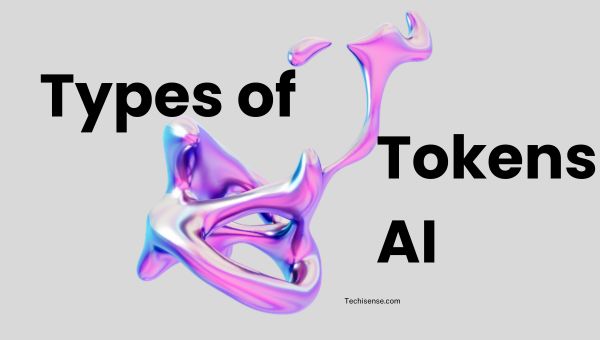
Ever wondered how artificial intelligence models like ChatGPT, GPT-4, or BERT actually “understand” and generate human-like text? The answer lies in a hidden powerhouse: tokens. In the world of AI, tokens are the essential building blocks that enable machines to process, analyze, and generate language that feels natural and coherent.
In this article, we’ll unravel the mystery behind “what is a token in AI,” exploring how tokens work, why they matter, and how they impact everything from chatbot conversations to content generation.
Whether you’re a developer, business leader, or simply AI-curious, understanding tokens will give you a new perspective on the magic behind today’s most advanced language models.
A token in AI is the smallest unit of data that an artificial intelligence model processes. Think of tokens as the building blocks of language for AI systems – they can be as short as a single character or as long as a full word, depending on the tokenization method used.
For example, in the sentence “AI is powerful,” each word might be considered a separate token, but some AI models might break down words further into subwords or even characters, especially for complex or unfamiliar terms.
Tokenization is the process of splitting text into tokens for AI processing. This step is critical because it transforms human language into a numerical format that AI models can understand and manipulate. The main tokenization strategies include:
Tokens act as the foundation for AI models to interpret and generate language, enabling efficient text processing, pattern recognition, and contextual understanding. Their structure directly influences model accuracy, computational efficiency, and the quality of AI-driven outputs.
Also Read: What is Information & Communication Technology – Explore Now
Generative AI models break input text into tokens, convert them into numerical vectors, and use these to predict and generate coherent responses. This process allows the AI to maintain context and produce relevant, fluent text outputs. Here’s the typical workflow:
For example, if you input “Tell me a joke about AI,” the model tokenizes the sentence, processes each token, and generates a relevant response by predicting the next most probable tokens.

AI systems utilize various token types, including word tokens, character tokens, and subword tokens. Each type serves different linguistic and computational needs, supporting tasks from basic text analysis to complex multilingual processing.
| Token Type | Description | Example Use Case |
|---|---|---|
| Text Tokens | Words, subwords, or characters in language models | Chatbots, writing assistants |
| Image Tokens | Segments or patches of an image for generative image models | AI art generation, DALL·E |
| Audio Tokens | Snippets or features of sound for speech processing | Voice assistants, speech-to-text |
Tokenization methods vary in complexity and suitability. For example, whitespace tokenization is fast but limited, while subword and BPE approaches handle rare words and multiple languages more effectively, though with added complexity and processing requirements
| Tokenization Method | Pros | Cons |
|---|---|---|
| Whitespace-based | Simple, fast, works well for English | Struggles with complex languages, ignores subwords |
| Subword (BPE, WordPiece) | Handles rare words, reduces vocabulary size | More complex, may split familiar words awkwardly |
| Character-based | Universal, works for any language | Increases token count, less semantic information |
| SentencePiece | Flexible, robust for noisy data | Can be slower, more complex to implement |
Tokenization streamlines language processing and supports diverse tasks, but it can introduce challenges like increased sequence length or loss of semantic nuance, depending on the method chosen. The right balance is crucial for optimal model performance
Pros:
Cons:
Also Read: What is Surgical Technology? [Pros & Cons You MUST Know]
Higher token counts increase computational load and API costs, as most AI services charge per token processed. Efficient tokenization reduces expenses and improves response speed, making it vital for scalable AI applications.
Tokenization must adapt to language diversity, ambiguous boundaries, and context shifts. Selecting or designing the right tokenizer is essential for handling complex scripts, domain-specific jargon, and ensuring robust AI understanding across varied inputs.
A: No, a token can be a word, subword, character, or even a phrase, depending on the model and tokenization strategy.
A: Using tokens allows models to handle a wider range of inputs, including rare words, typos, and languages with complex scripts.
A: Many AI providers offer token counting tools, and you can estimate that 1 token ≈ 4 characters in English, or about ¾ of a word.
A: The model will truncate or reject input that exceeds its maximum token window, potentially losing important context.
Exploring “what is a token in AI” is crucial for anyone working with or interested in artificial intelligence, especially in the realm of natural language processing and generative AI. Tokens are the invisible building blocks that allow machines to break down, analyze, and generate human language, images, and audio.
They determine the efficiency, cost, and capability of AI models like ChatGPT, GPT-4, and beyond. As AI continues to evolve, mastering the art and science of tokenization will remain at the heart of developing smarter, more responsive, and more cost-effective AI systems.
Whether you’re building the next great chatbot or simply curious about how AI understands your words, remember: it all starts with the humble token.